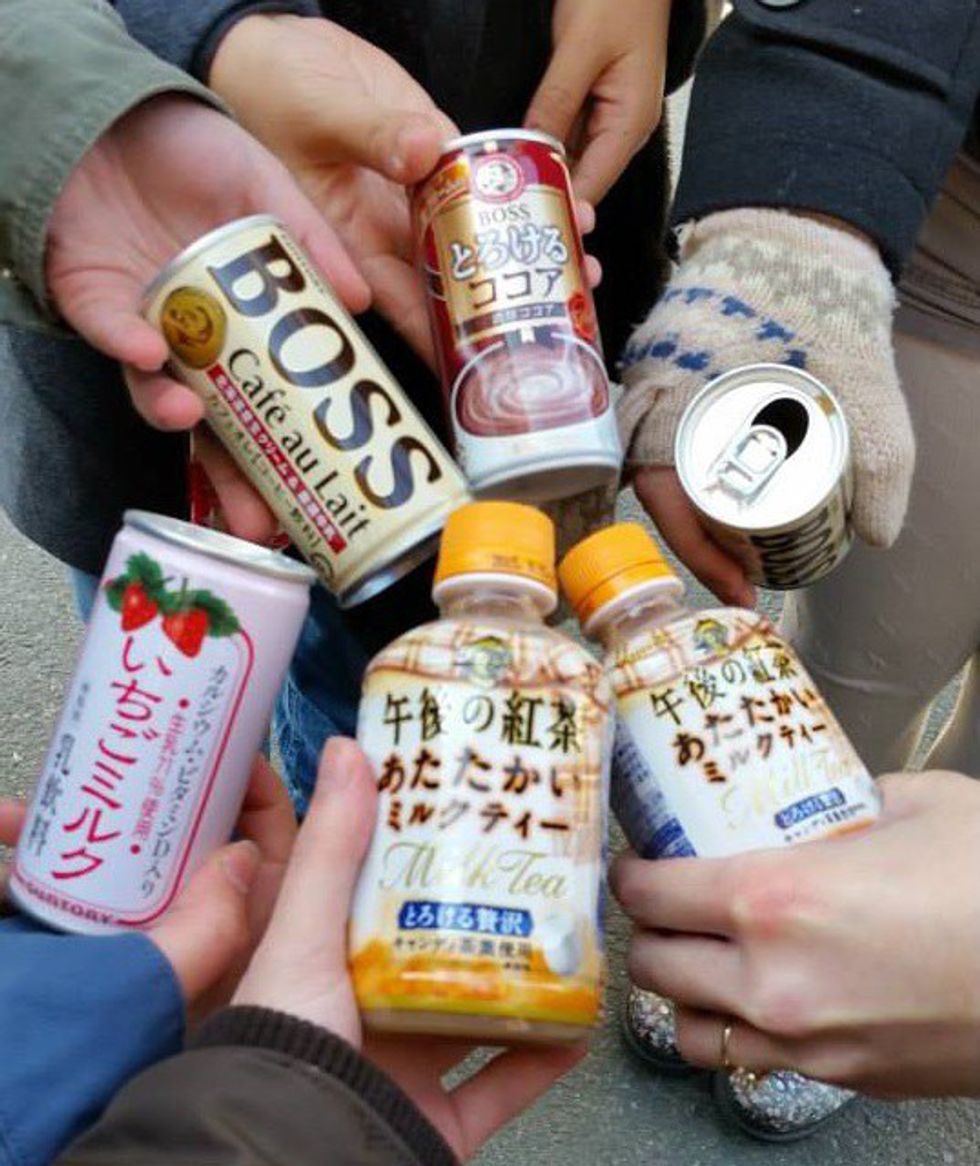I remember feeling my textbooks bounce against my back and the icy winter winds sharply sting my nose while whipping and tangling my hair. Living abroad in a new country didn't seem to change my poor time management habits. As I found myself leaving my apartment late and running to school in Japan just as often as I did in America, a three-minute train ride and 10-minute walk usually turned into a mad dash from the station to the classroom. There were days I left early enough to grab some cheap convenience store bread from the nearest 7-Eleven, but otherwise, I grew accustomed to skipping breakfast and zooming right on past the lines of students waiting with packaged bread and juice in hand. It was during these trying times of hunger and self-induced panic that I turned to my saving grace: jidōhanbaiki, or vending machines.
I saw Japanese jidōhanbaiki everywhere I went during study abroad. I would pass at least a dozen jidōhanbaiki alone on my 15-minute trek to school. The machines’ bright red paint and the brilliant display windows easily attracted the wandering eye, and the jingle of loose yen coins in my money purse rang louder in my ears to tempt me whenever I passed one.
When there was no time for breakfast, I would skid to a halt before one of the many huddled at the street corner, and quickly slide in a couple 100-yen coins. A can of Boss-brand Café Au Lait and another can of creamy corn soup (yes, these machines serve CANNED SOUP!) would drop with a hard clank into the pick-up slot, and I’d be back on the road in a matter of seconds.
Now, my dear readers may be thinking, "What’s so special about a vending machine?" Well, let me tell you, in my honest opinion, Japanese jidōhanbaiki cannot compare to our dingy American ones. Gatorade and soda? Sure, that's fine, but it felt satisfying to have plenty of other options aside from standard Coca-Cola: different roasts of canned coffees, milk teas, cocoa, fruit juices, melon soda, strawberry milk and canned soup (it's been over a year and this is still amazing to me), to name a few.
What really astounded me was not just the type of drinks, but also the fact that jidōhanbaiki could dispense both cold and hot drinks. Hot selections, particularly prominent during the colder seasons, are color-coded red on the display window and kept warm inside these magic metal boxes. I made extra efficient use of these drinks, warming my hands on piping hot cans of cocoa at night whenever I wanted to spare using my apartment's costly heater. A few jidōhanbaiki I've encountered dispense cigarettes, ice cream, cup ramen, fruits and umbrellas, though the classic drink machines are never more than a block away.
Of course, these vibrantly colored boxes had a price; a costly one, too, if you used them as much as I did. The cost of jidōhanbaiki drinks in my area averaged about 100-120 yen, roughly equivalent to $1 per drink if you ignore fluctuating currency exchange rates. Calculate the total cost of at least two drinks a day for four months… let’s just say much of my spending money went toward keeping my stomach happy with these on-the-go beverages.
These magic boxes became the cold, hard killers of my monthly savings, but their visibility on every street truly reflects the island nation's culture of convenience and technological innovativeness. I find myself longing for them even now, wishing I were still just a few strides away from my sweet canned corn and coffee.









 The minimum wage is not a living wage.
StableDiffusion
The minimum wage is not a living wage.
StableDiffusion
 influential nations
StableDiffusion
influential nations
StableDiffusion












